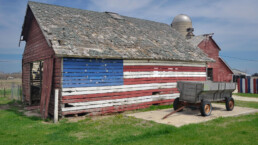If the Democrats could have won just five more districts, they would have held the House. And five districts were there to be won—in rural and exurban America.
by John Nichols, The Progressive
My ancestors settled in rural Southwestern Wisconsin in the 1820s, and it is in this region that I learned about politics. My great-grandfather served for almost four decades as the village president of this community located just south of the Wisconsin River. He was an economic and social progressive who campaigned in rural Grant County for “Fighting Bob” La Follette, the U.S. Senator who founded The Progressive, and his friend John Blaine, a Lincoln Republican who a century ago served six years as one of Wisconsin’s most radical governors.
When I was born, the Congressman from the district was Gardner Withrow, a railroad union activist from La Crosse who was elected several times on the ballot line of Wisconsin’s independent Progressive Party. Withrow finished his career as a liberal Republican who voted for civil rights, strong unions, and rural policies that helped family farmers stand up to corporate agribusiness.

The lines of Withrow’s old Third Congressional District have changed somewhat during the ensuing decades, but the values that historically underpinned its politics have remained reasonably consistent. As the Republican Party abandoned the progressive stances associated with Blaine and Withrow and veered to the right, the district began to back Democrats. Western Wisconsin voted for Michael Dukakis in 1988 and for every other Democratic presidential nominee until 2016—when Republican Donald Trump narrowly won the region and the state. Joe Biden increased Democratic numbers in 2020, when he carried the state once more for the Democrats. That year, the Third District re-elected its Democratic Congressman, Ron Kind, and sent a crew of Democratic state senators and representatives to the Wisconsin legislature.
Recent Posts
Politicians Are Betraying Gen Z On Climate
July 10, 2025
Take Action Now While Gen-Zers thrift, knit, crochet, and find other ways to reduce our footprints, Trump and the GOP are greenlighting more climate…
Trump’s Deportation Threat Against Zohran Mamdani Is Shameful
July 10, 2025
Take Action Now In only half a year of Donald Trump’s presidency, he and his allies have turned deportation into an explicitly political threat…
Teachers Union Votes To Cut Ties To The Anti-Defamation League
July 10, 2025
Take Action Now In a momentous vote, the National Education Association voted to cut all ties with the Anti-Defamation League. The reason? “Despite…
2025 War Abolisher Awards Go To Albanese, Nader, Waters
July 9, 2025
Take Action Now The purpose of the awards is to honor and encourage support for those working to abolish the institution of war itself.By World…




